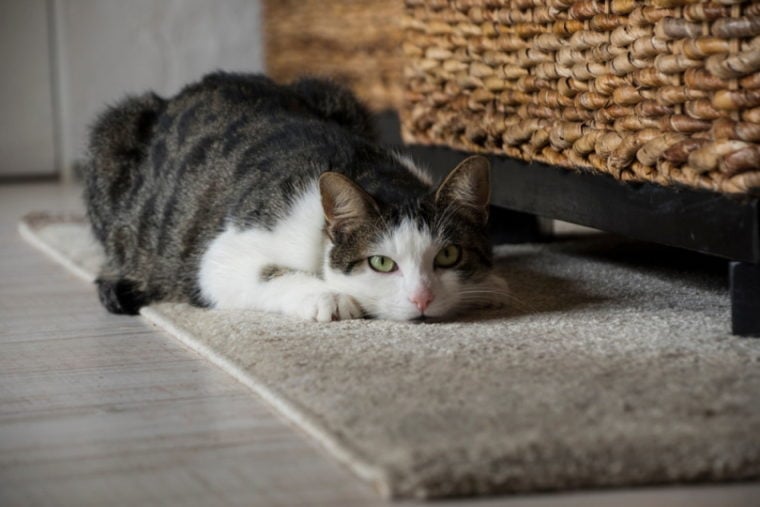
Your cute little kitty suddenly becomes less adorable when he transforms into a wild feline and attacks your plush rugs! And given that declawing your cat is largely considered cruel and can lead to many long-term problems, you must consider better solutions. But before we get to these tips and tricks, keep in mind that scratching is normal cat behavior. Therefore, it is useless to punish your cat when you catch him in the act, despite the distressing sight of your tarnished carpet.
Instead, check out our five solutions to prevent your cat from damaging your beautiful carpets.

The 5 Tips to Protect a Carpet From Cat Scratching
1. Trim Your Kitty’s Claws

Trimming your cat’s claws is a cheap and quick way (depending on your cat’s temperament!) to protect your carpets.
As a general rule, indoor cats’ nails should be trimmed every 10 days to 2 weeks. In addition to protecting your carpets and other furniture, regularly trimming your kitty’s claws prevents them from curling into the pads, causing pain and infection. If your cat spends a lot of time outdoors, trots all day on rough surfaces, and climbs every tree it comes across, you probably won’t need to trim his nails.
Be careful, however, when trimming the tips of your cat’s claws, not touching the central white or pink part, also called the quick. You risk injuring your pet, causing it to bleed profusely and cause severe pain.
Keeping your cat's nails trimmed is important, but it's no one's favorite task. You can make it easier with great clippers designed specifically for cats. We like Hepper's Cat Nail Clipper Set, a convenient combination of medium and small clippers that comes in a handy pouch. These sharp stainless steel clippers allow for precision trimming, with the added protection of built-in safety guards. Plus, there's a hidden nail file!
At Pet Keen, we've admired Hepper for many years, and decided to take a controlling ownership interest so that we could benefit from the outstanding designs of this cool cat company!
2. Remove Access to Your Carpets

A relatively simple solution is to prevent your cat from accessing your carpet or part of it by covering it with specific materials:
3. Redirect Your Cat’s Scratching

As you might expect, scratching is normal behavior for cats. This allows them to mark their territory with scent glands in their feet, keep their claws sharp, and stretch their leg muscles. Since trying to stop your cat from scratching is pointless, you need to use specific items to redirect this behavior:
To encourage your cat to use these new scratching objects, sprinkle them with catnip and praise your pet every time you see him using his new toy.
4. Reduce Your Cat’s Stress

While scratching is a normal behavior for cats, excessive scratching is not. So, if your attempts to reduce scratching are unsuccessful, your cat may be suffering from stress.
Certain factors or situations can cause stress in cats, such as health problems, a recent move, conflicts with other cats or pets, too much loneliness, new people, or new pets in the house. household, etc.
Sometimes, your cat just needs to get used to a new routine or new members, animal or human, in the house. Either way, it is best to have your kitty checked out by a vet to rule out any underlying health issues. They will be able to determine if your cat’s excessive scratching problem is related to a health problem or if it is due to other stressors.
5. Use Deterrents Sprays

You can use natural or commercial deterrent sprays to prevent your cat from scratching your carpets. You can easily make homemade cat repellent that won’t harm your cat or your carpet. Just mix a few teaspoons of pepper or white vinegar with ¾ of water in a spray bottle.

Conclusion
Your cat is not scratching your carpets to annoy you. Most of the time, this is just natural behavior with “little consequence” other than ruining your beautiful rug. Fortunately, by applying a few simple tips and tricks, you won’t have to replace your living room carpet every month!
See also:
- How to Trim Your Cat’s Nails at Home in 5 Vet-Approved Steps (With Video)
- How to Get an Unwilling Cat Into a Carrier (4 Proven Methods)
Featured Photo Credit: Brita Seifert, Shutterstock








